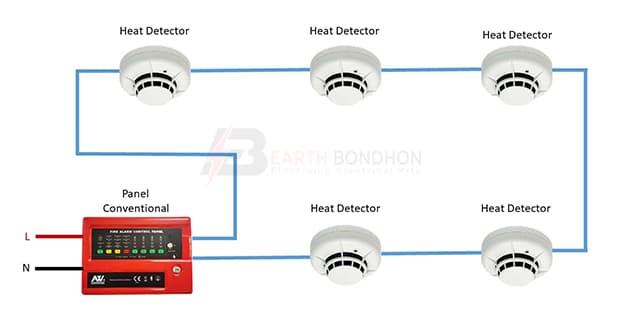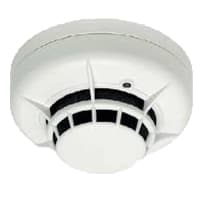Simple Fire Alarm System Wiring:
This diagram shows how to make Simple Fire Alarm System Wiring. In this circuit diagram, we use a total of five heat detectors, a panel conventional. First, we input the connection to panel conventional, then from panel conventional to connect all heat detectors like our diagram. Now this circuit diagram is ready for use. If you want to know more about this circuit diagram please check our youtube video in the below post.
Components needed For this Project:
You can get the components from any of the sites below:
*Please note: These are affiliate links. I may make a commission if you buy the components through these links. I would appreciate your support in this way!
Components used to make the Simple Fire Alarm System Wiring:
A hit detector is a sensor that provides a signal to the panel in the presence of abnormal heat. This heat detector only signals when the temperature goes above 55 degrees Celsius or more. It does not detect smoke or fire directly. Install heat detectors in areas where you cannot place smoke detectors. Make sure it is placed in a location that ensures that, if there is a fire near the detector, the escape route is still accessible.
02. Panel Conventional:
Fire alarm pane Conventional is more of a traditional fire Protection System, and they’re also the Most Common type of fire alarm system in pane Commercial Settings. They’re an Analog System and Despite Advances in Technology, Conventional Panels Remain an ideal Option in Many Circumstances. A Fire Conventional Alarm System protects a Structure by Dividing it into Zones. A Series of Initiating Devices and Notification Devices work Together to Create Different Zones Throughout the Structure that all Connect to the Fire Alarm Control Panel Conventional.
Thank You for visiting the website. Keep visiting for more Updates.
Read more Single Phase Wiring
Fire Alarm System Conventional Wiring
Fire Alarm System Conventional Wiring: This diagram shows how to make a fire alarm system with conventional wiring. In...
Fire Alarm System Wiring Diagram
Fire Alarm System Wiring Diagram: This diagram shows how to make Fire Alarm System Wiring Diagram. In this diagram, we...



0 Comments